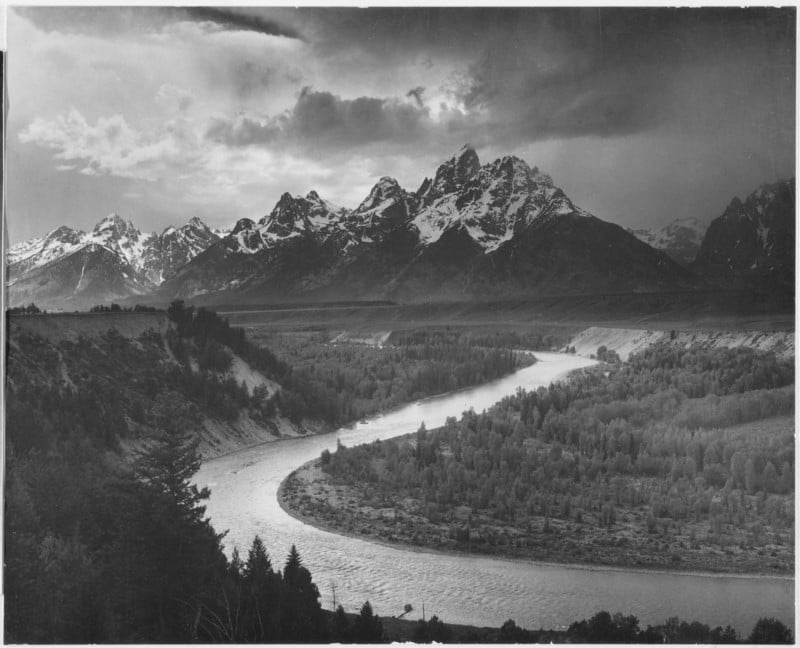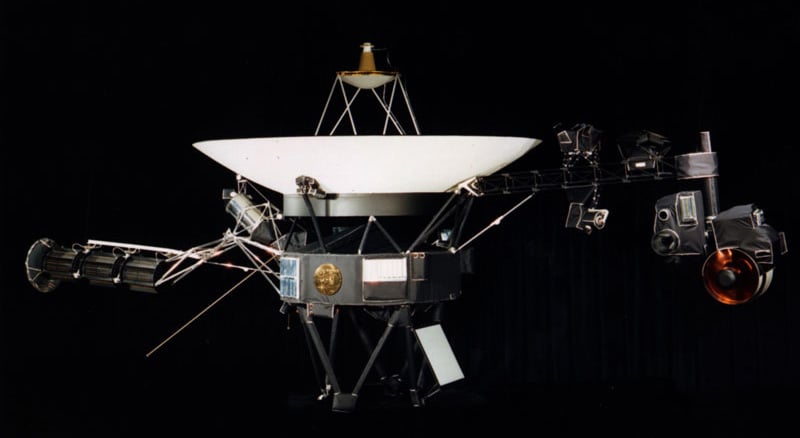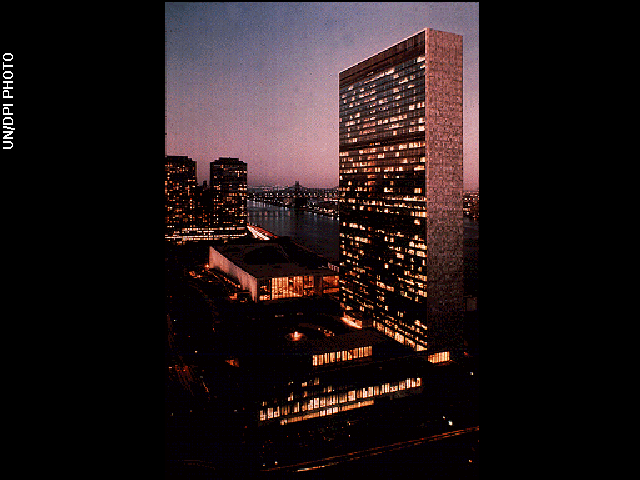These Photos Are Flying Through the Universe Stored on a Golden Record

NASA’s Voyager 1 and 2 — spacecraft that are 15.5 billion miles from Earth — are having two science instruments turned off as they continue to struggle for power on their interstellar journey.
Each spacecraft carries a Golden Record containing 115 photographs that serve as a time capsule representing life on Earth. Among the images are diagrams, scientific data, and audio recordings of music, nature sounds, and human speech in multiple languages.
The photographs were curated by Carl Sagan and his team; they are encoded in analog form. The photos include views of the UN Building at night, a nursing mother, and an astronaut spacewalking. In terms of photography, there is an Ansel Adams photo on the record; his famous The Tetons and the Snake River shot.


Voyager 1 and Voyager 2 have made it deeper into space than any manmade object in history. Both were launched in 1977 to photograph a fortuitous alignment of the planets in our solar system.
The probes’ primary purpose was to fly by Jupiter and Saturn, which they did in two years. After successfully completing their initial mission, they just kept going deeper into space and sending back images of our solar system from afar.
In 1990, Voyager 1 sent back the iconic Pale Blue Dot picture taken 3.7 billion miles away from the Sun. It famously shows Earth against a gigantic expanse of space.

But both spacecraft have power issues. In 2022, NASA turned the power down because the radioactive plutonium-powered probes are losing energy by about four watts a year.
This week, NASA revealed it deactivated Voyager 1’s cosmic ray subsystem experiment. And later this month, it will shut down the low-energy charged particle instrument on Voyager 2.
Launched 45 years ago, the space agency’s initial projections had expected the Voyager mission to last just four years. But 47 years later, the “deep space” superstars are still going having left the solar system in 2012 and 2018, respectively.
What will become of the photos onboard the spacecraft is a mystery. In 20,000 years’ times, the probes may pass Earth’s neighbor star, Proxima Centauri; will any other lifeform get to look at the photos?
Image credits: NASA